Dear Extended Thinkers,
It was a pleasure for me to share techniques to think with more space, more structure, and more clarity.
To go further with GTD, I warmly encourage you to read (and implement) the methodology described in David Allen’s book “Getting Things Done”. Following a workshop from an official GTD coach is also a great idea that I’d recommend so take the time to go into the practical details. I also encourage you to continue the habit of doing “mindsweeps” whenever you feel overwhelmed.
I hope you’ll also use outlines to structures your to-do lists, your thinking, your presentations, your writing, or to brainstorm and organize ideas as a group, as we did during the afternoon. I do not doubt that many of you already knew about outlining, but I invite you to try to use them more systematically, and try specialized softwares.
Regarding the theory of constraints, many tools and techniques exist. However, much of the philosophy behind it is pragmatic, so you don’t have to master all the tools to start using them. To give you a personal example, I once decided to map the reasoning of a paper I had written, thinking it would just take me a few hours. It took me more than two days to flesh out the skeleton of my own reasoning! So it takes time, and it’s normal.
As you noticed with the example you worked on, a huge part of the effort is to clarify the reasoning and dissolve all ambiguities. In that example, I realize that it was not so obvious to distinguish the core proposition, from its evaluation (is the whole argument true or false if this or that statement is true or false). The theory of constraints document I asked you to read also puts question marks on the arrows, which was OK to explain the categories of legitimate reservation, but is actually not a standard way to proceed.
Anyhow, putting your reasoning outside your head leads to asking a lot of questions, and this in itself has a lot of value. As I told you, this can be seen as a structured brainstorming on an existing problem or a proposed solution. In professional or group settings, this can be used to be sure that everybody is on the same page on a problem or solution, or agreeing with stakeholders that an interpretation or model of a current situation or solution correct.
Finally, the Flying Logic software staff informed me that they can offer a $100 discount for educational licenses. An impressive feature of the software is that it manages the design automatically, so you can focus on your reasoning and nothing else. Please let me know by next week (Fri 20th) if you’re interested.
I wish you all a great continuation, happy holidays, and I remain available if you have further questions.
Clément Vidal.


